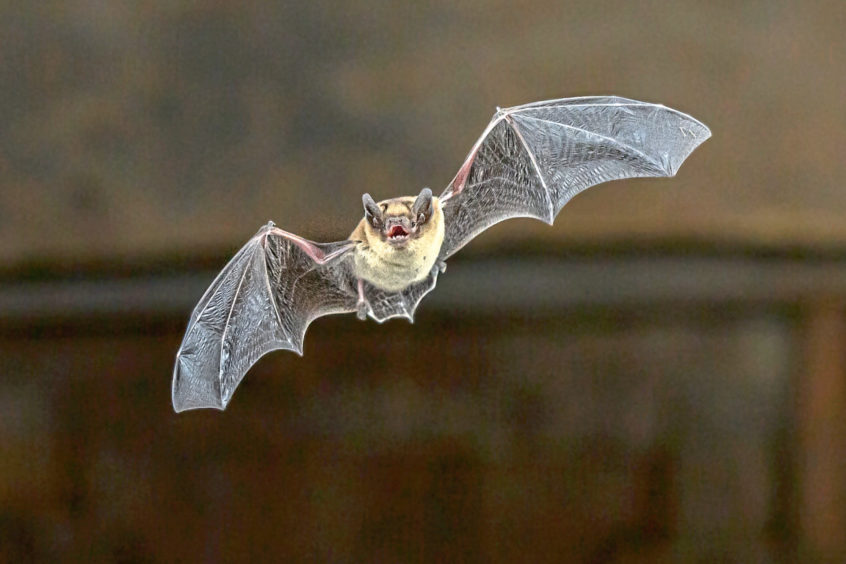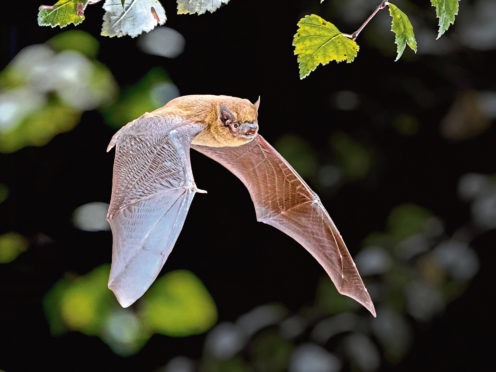Among the best places to watch bats are along the wooded margins of slow-flowing rivers and lochs at dusk where insects are typically abundant.
A bat on flickering wings swoops and swerves over the garden in the soft fade of the gloaming and my headphones suddenly burst into life, filling my ears with a cacophony of weird staccato clicks that gain rapidly in intensity before drifting away again as this spirit of the night disappears from view.
I wait for a while longer, and this time around I hear the bat first before I see it; another quick-fire series of clicks, a strange and unfamiliar sound like no other I’ve heard in the natural world. The buzzing rattle picked-up through my electronic bat detector are the ultrasonic calls that bats use to hunt moths and other flying insects.
The bat detector is small – not much bigger than a mobile phone – and it converts these high frequency calls into sounds that can be discerned by the human ear. Bats locate their insect prey and objects in the environment by the pattern of returning echoes from their calls – a system called echolocation.
It is an amazing adaptation, and as I watched this bat veer across the garden, its calls periodically brimming through my earphones, I am consumed with awe at the forces of evolution which developed such a remarkable hunting system. They are its eyes in the dark, and the echolocation is so effective in painting a detailed picture of the environment, that this bat weaved and twisted its way through the tangle of branches of nearby trees without the slightest hesitation.

Bat detectors are useful for naturalists because as well as giving an insight into their secret ultrasonic world, they also aid in species identification. This is because each type of bat generally has a distinctive frequency call range. The peak frequency of the bat flying around my garden was 55 kHz, which told me it was a soprano pipistrelle. Slightly earlier that evening I had picked up a bat calling at 45 kHz, which meant it was a closely related common pipistrelle.
Just like a modern-day human armaments race, moths have evolved their own countermeasures, and when a moth detects the sound of an incoming bat it is often able to take avoiding action – sometimes by closing its wings and dropping quickly earthwards.
Not to be outdone in this battle between predator and prey, the long-eared bat has developed an extremely weak echolocation call, so soft that it is sometimes dubbed the ‘whispering bat’. This enables it to approach flying moths without being detected quite so easily.
I recall many moons ago being shown by a friend from the Bat Conservation Trust a long-eared bat roost in the attic of a house. The bats were huddled in the timber apex, a bundle of furry faces peering down at us. For me, it was a cathartic experience; a miracle of nature impossible to comprehend – each bat so beautiful and perfectly formed, a timeless moment etched forever on my mind.










